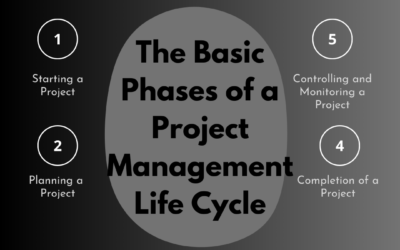
An acronym for the process of defining goals is SMART. The letters in the acronym represent the attributes of creating objectives that are essential: “specific,” “measurable,” “achievable,” “relevant,” and “time-bound.” The SMART method gives you a tool to track your success and take responsibility for it. By deciding what steps to take to achieve your goal, SMART goals enable you to evaluate your objectives realistically.
For instance, you can decide that you want to “improve” your typing. Yet, you discover that your aim is extremely nebulous after utilising the SMART technique to evaluate it. You can make your objective SMART by restating it in terms of numbers, such as “be able to type more words per minute.” The remaining aspects of the SMART goal process can then be further reflected in the attributes of this goal.
Consider using the SMART stages to help you reach your goals when you decide to create one for yourself:
Specify your objective.
Being specific with your goal description is the first step in developing an achievable objective. Think of it in quantitative terms and decide what steps you need to take to get there. The examples below demonstrate how to narrow down a general purpose into a precise SMART goal.
Example of a goal prior to a “particular” requirement: “I wish to improve my typing.”
Example of a goal following “particular” requirements: “I wish to speed up my typing.”
By determining which component of typing can be a goal, this example objective narrows down a wide statement that could represent a variety of approaches and behaviours, such as acquiring the correct typing techniques or avoiding looking at the keyboard while typing. This example can then be further assessed to see if it satisfies the remaining SMART goal requirements.
Set quantifiable objectives.
It’s time to consider how you’ll take action to measure your specific objective after you’ve set it. You are prompted to use techniques for tracking your progress towards reaching your goal at this level of the SMART process. Being measurable also takes into account any steps you might take to advance your path to your objective. For instance, you might do this by keeping track of how long it takes you to finish a task or reach a goal. The example that follows demonstrates the transformation of a general objective into a precise and quantifiable one.
Example of a goal that comes before “measurable” criteria: “I will speed up my typing.”
Example of an objective with “measurable” criteria: “I want to increase my typing speed from 50 words per minute to 65 words per minute. I can track my progress by taking timed tests that demonstrate the growth in my typing speed.”
Make your objective attainable.
Consider whether your established goal is doable after drafting a precise target and assessing how you’ll measure it. You may figure out your realistic chances of attaining your objective by taking into account how long it will take, any roadblocks, and measurement techniques. The more feasible and realistic the objective, the more likely you are to continue making progress. When applying the “achievable” criteria to your aim, take into account the examples below that show a “before” and “after” effect.
Example of a goal that meets the “achievable” criteria: “I will increase my typing speed from 50 to 100 words per minute.”
Example of a goal that meets the “achievable” criteria: “I would like to increase my typing speed from 50 to 65 words per minute. I can do this by making weekly incremental improvements in my typing speed.”
This SMART approach component also has to do with how measurable your goal is. A goal that is detailed and quantifiable increases the likelihood that it will be accomplished because it enables you to see exactly how you will make progress as you work towards the goal. Even though the example goal of writing 100 words per minute in one minute might be attainable when compared to the other SMART criteria, it’s possible that this goal won’t be reached in the time frame you’ve set or that it will require more resources.
Ensure that it is pertinent.
When a goal is pertinent, it has a direct connection to a professional growth tactic or talent that you wish to hone. For instance, it would make sense to set a goal to assist you improve your abilities and workflow as you move towards that goal if you wanted to get a good rating on your upcoming employee assessment. Moreover, any objectives you make or steps you do to accomplish your goal ought to have a direct impact on your advancement. The “relevant” trait is used in the examples that follow.
Example of a goal before “relevant” criteria: “I will set aside 15 minutes each day to arrange my workstation in order to boost my typing speed.”
Example of a goal following “relevant” criteria: “I want to enhance my typing speed from 50 words per minute to 65 words per minute, thus I’ll set aside 15 minutes every day to practise and perform timed speed tests.”
This illustration demonstrates a practical step that can be taken to advance the goal-achieving process. Your objective and your measurable outcomes must all be logically related.
Make a time-limited schedule.
Time-bound refers to the timeframe you establish for achieving your objectives as well as the length of time it will take you to complete milestones and obtain your desired outcomes. Think about if your objective is short- or long-term. From there, you can establish a schedule and timeline for yourself to fulfil due dates and accomplish your goal. Also, your timescale should be reasonable and provide you with lots of chances to make changes to your goal’s relevance, specificity, and attainability. Take the following example, the last stage in the SMART process.
Example of a goal before the “time-bound” criteria: “By allotting 15 minutes each day to practising speed typing and taking timed exams, I will raise my typing speed from 50 words per minute to 65 words per minute.”
Using the “time-bound” criteria, an example goal may be, “I will increase my typing speed from 50 to 65 words per minute within three months. I’ll set aside 15 minutes every day to practise moving quickly, and I’ll time myself once a week to see how I’m doing.
This goal now satisfies all requirements for a SMART goal because it demonstrates how specific the objective is, provides a method for tracking progress, is feasible and pertinent to the desired skill development, and establishes a schedule for achieving each milestone and completing the goal as a whole.




